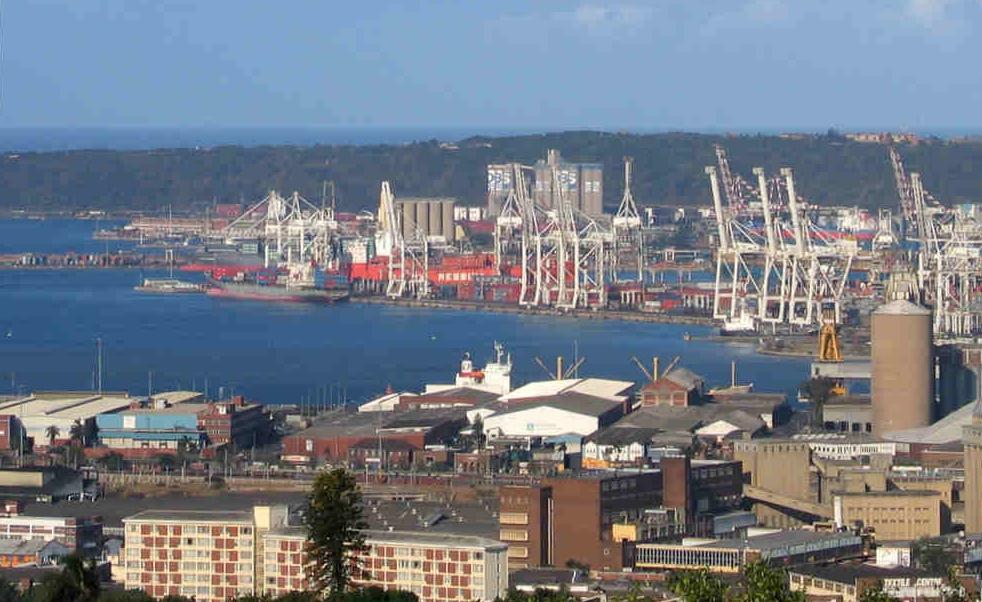African ports have a great deal of potential, but are only in the early stages of tackling a range of issues before that potential can be fully realized. This was a recurring theme of the 16th Intermodal Africa 2016 held in the Kenyan port city of Mombasa.
No one was left in any doubt about the scale of the work such a task involves.
Africa’s ports “hardly feature” in the world’s top 70 ports, and of the 10 billion tons of cargo moved last year, only 800 million tons – less than 10% – came from African ports, Richard Vallihu, chief executive of South Africa’s Transnet National Ports Authority, told Intermodal Africa.
Of the 59 ports in Africa, approximately 75% are still plagued by challenges including lack of adequate port facilities and deepwater berths, poor equipment and lack of maintenance and limited capital to modernize port infrastructure. It is a big problem, but a variety of moves are afoot to end it.
As the continent’s richest and most developed country, South Africa is leading the move to make Africa a shipping and ports power, although not all African countries will have the scope it has to invest in infrastructure. South Africa is putting R360 billion (US$2.5 billion) into infrastructure.
While this involves some new hardware, the emphasis is really on cooperation and capacity building.
“Here in Africa we need to collaborate. Collaboration is far more powerful than competition,” he said. “Africa must be about building capacity.”
One capacity Africa is keen to build, believing it will allow Africa to leapfrog up the development process, is digitalization.
“I think in Africa this going to be the game-changer,” Vallihu said, pointing to Durban’s smart port as the precedent.

Using 18 touch points, information can be shared across the supply chain and with local communities who previously had been shut out. More information led to improved coordination on both land and water sides. Currently, drones are also being used for surveying, sampling and message sending. “It improves the terminal time,” Valihu said.
Neighbouring Mozambique illustrates well the scale of ambition, but also how far behind the region is compared to well-ported regions such as Asia and Europe.
Mozambique has three major ports in Maputo, Beira and Nacala, with Beira using its geography to pitch for business and status as it aims to be the primary port for Southern Africa.
“We are the second major port, but in terms of traffic we are better because we are serving four countries: Malawi, Zimbabwe, Zambia, and Lubumbashi province in the Democratic Republic of Congo,” Rui Sabia Massuanganhe, sales and marketing officer for terminal operator Cornedeler de Moçambique, told Asia Cargo News.
Supporting this assertion, Beira has railway links in the Machipanda and Sena lines which serve Zimbabwe and the Moatize coal fields, respectively. The problem is the onward connections either don’t measure up or need to be put in place altogether – or they simply don’t exist in the volume, variety and standards required.
Currently Beira is best described as a modestly sized facility.
“Last year we did 211,000 TEUs,” Massuanganhe said, although this year was “slightly down” because drought in the region hit exports such as Malawian tobacco, and the drop in commodity prices has dented Zambian copper exports. Beira’s goal is for it to move 1 million TEUs by 2039 and 1.2 million TEU by 2053. “That’s our vision. We believe we can reach it,” he added.
As if this wasn’t enough, Tanzania proves the scale of the hardware problem, although Dar es Salaam’s port brings some things, albeit small and basic, to the table. Its inland container depot, Tanzania’s first fully licensed one, has “been recognized as a port extension by the port authority,” said David Chimfwembe, CEO of the government-owned Zambia Cargo and Logistics.
The port, he added, has modern and sufficient equipment for containers, loose and bulk cargo, and does have intermodal connections as well as 24/7 security and weighbridge services up to 80 tons.
What offsets all this is the scale of the potential and the needs that are there both for exports and imports. Not only is China’s economic boom, despite recent chatter of a slowdown, creating a need for facilities to export raw materials, much of Beira’s coal, for example, goes to China, but Africa is itself changing, and big time.
Of the countries of East and Central Africa, only two are not growing: South Sudan, which is flatlining, and Burundi, which shrank by 4%. Offsetting this, Kenya grew by 5%, Tanzania by 7% and Ethiopia by 10%. Even war-torn Somalia grew by 4%.
One of the more instructive presentations at Intermodal was given by Silvester M. Kututa, CEO of Kenya’s Express Shipping and Logistics, who illustrated what recent growth has meant for imports. In the 2014/2015 financial year, incoming oil volumes increased 17%, steel 9% and cement 40%, he said.
Figures like that suggest it might be time to get beyond the notion of Africa as lions, wars and foreign aid and prepare instead for a port and economic boom.
By Michael Mackey
Correspondent | Mombasa